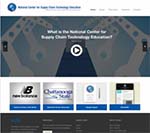Making Your Website Usable For Everyone
At the start of the Information Age, several scholars predicted
that the Internet would remove some of the barriers that made
obtaining access to information more difficult for certain groups.
And in fact, much of this predication has been realized, although
it remains difficult for some portion of those with various
disabilities and needs to perceive, understand, navigate, and
interact with the Web. People with disabilities may need to use
specific tools or techniques to do things online that many of us
take for granted - and some websites and web software today still
have accessibility barriers that constrain these users’ Web
experience. It's important to remember that accessibility is a
legal issue, too - to better understand the legal ramifications of
accessibility check out
http://www.section508.gov.
This site explains the ins and outs of section 508, which was
added to the Rehabilitation Act of 1973 in 1998 and requires all
Federal agencies to make electronic and information technology
accessible to people with disabilities.
In order to ensure that your project or center's website can be
easily accessed by as many individuals as possible, including
people with disabilities, here are a few steps to take into
consideration and help you get started.
First - Evaluate your current website to understand how
accessible it is to those with disabilities. More information and
a list of evaluation tools can be found on this
site from the World
Wide Web Consortium (W3C), but also remember that human evaluation
is key to success. Your own campus is a great source, especially
if you have a student center that focuses on accommodation - you
may be able to meet with students and faculty who have
disabilities and would be willing to check out your site and
provide feedback. If your campus doesn't have a center related to
disabilities and accessibility, you might check your region to see
if another institution offers help in this area. You can also
contact professional associations like
The National Federation for the Blind as
they may be able to steer you toward consumers or others experts
who can help.
Next - Decide which solutions are most important to your
project/center. There are several ways to make your website more
accessible to those with disabilities. It's important to
prioritize solutions according to the needs of your specific
audience and to also consider the time, cost, and skills that will
be required. Prioritize those solutions that will have a high
impact and whose barriers can be easily addressed. For ideas on
how to update your project/center's website, the following page
lists 6 great tips for improving Web accessibility:
http://webdesign.tutsplus.com/articles/6-tips-for-improving-website-accessibility--webdesign-1660.
Finally - Implement the repairs that are most important to your
project or center and re-evaluate your updated website! Again, it
may be helpful to turn to experts if you have access to them at
this stage. Though some of the improvements may be admittedly
timely or difficult, making the Web accessible and useful to those
with various needs and disabilities is a necessity today. And, as
the concept of Universal Design for Learning
reminds us, making anything more accessible to people with
disabilities makes it more usable for all of us!





